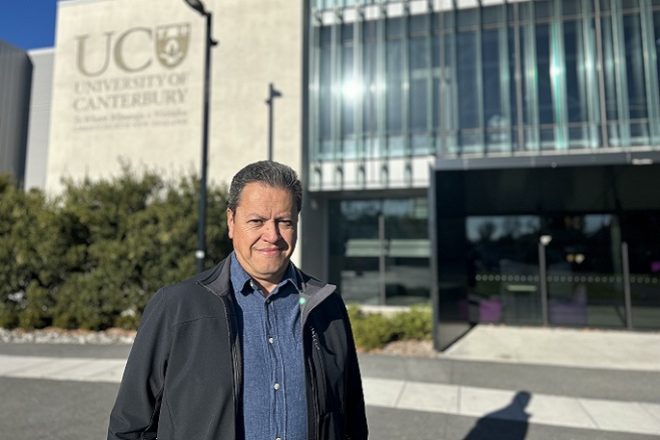Para peneliti di University of Canterbury sedang mengerjakan alat untuk membuat pengolahan air limbah lebih berkelanjutan. Alat ini sedang dikembangkan oleh mahasiswa PhD Madeline Furness dan Associate Professor Ricardo Bello-Mendoza, dalam kemitraan dengan Profesor Rolando Chamy dari Pontificia Universidad Católica de Valparaíso, Chili. Mereka mempelajari dua pabrik air limbah di Santiago, Chili, dan menggunakan data untuk membuat model untuk meningkatkan manfaat dan meminimalkan dampak pengolahan air limbah.
Para peneliti percaya bahwa dua pabrik air limbah di Chili adalah contoh bagus dari pengolahan air limbah berkelanjutan. Mereka melihat tiga aspek keberlanjutan air limbah: lingkungan, ekonomi, dan sosial. Mereka menggunakan alat seperti Life Cycle Costing dan Social Life Cycle Assessments untuk menilai aspek-aspek ini. Tujuannya adalah untuk menemukan kombinasi proses terbaik untuk mengurangi dampak lingkungan, memotong biaya, meningkatkan manfaat, dan mempertimbangkan dampak sosial.
Para peneliti mencatat bahwa industri air limbah lambat mengadopsi teknologi baru karena biaya tinggi. Namun, alat mereka dapat meningkatkan kinerja lingkungan dan keberlanjutan pabrik air limbah tanpa investasi besar. Ini dapat membantu membuat keputusan tentang input kimia atau kondisi operasi proses untuk meningkatkan kualitas limbah sambil meminimalkan dampak negatif seperti emisi gas rumah kaca atau toksisitas yang lebih tinggi.
Para peneliti juga memperkenalkan gagasan pendekatan Ekonomi Sirkular Air Limbah (WW-CE), di mana air limbah dipandang sebagai sumber daya potensial. Alih-alih hanya mengolah air limbah untuk membuatnya aman untuk dibuang ke lingkungan, pendekatan ini memulihkan sumber daya dari air limbah, seperti air olahan, biosolid, nutrisi, bioenergi, dan biomaterial. Sumber daya ini dapat digunakan dalam pertanian dan irigasi.
Para peneliti menemukan bahwa salah satu pabrik air limbah meningkatkan keberlanjutan keseluruhan sebesar 30% dan yang lainnya sebesar 48% menggunakan pendekatan WW-CE. Mereka percaya pendekatan ini dapat merevolusi sanitasi global.
Selanjutnya, para peneliti berencana untuk mengadaptasi alat untuk digunakan di Selandia Baru dan mendiskusikan aplikasi praktisnya dengan dewan kota. Mereka percaya ada potensi signifikan untuk perbaikan dalam proses pengolahan air limbah Selandia Baru.
Penelitian ini didanai oleh Universitas Canterbury, Universitas Katolik Kepausan Valparaiso, Chili, dan Badan Nasional untuk Penelitian dan Pengembangan Chili. Kerja lapangan didukung oleh Aguas Andinas, Chili.




























































